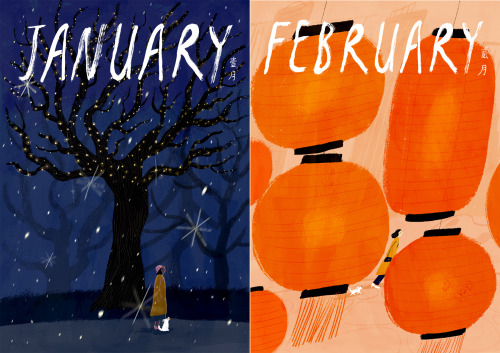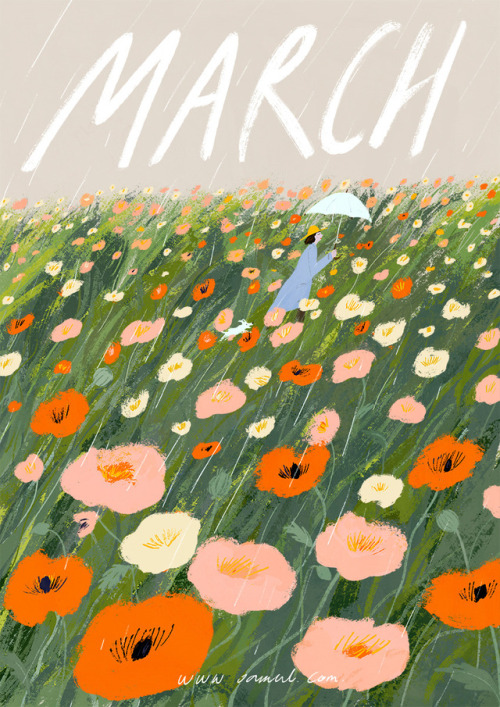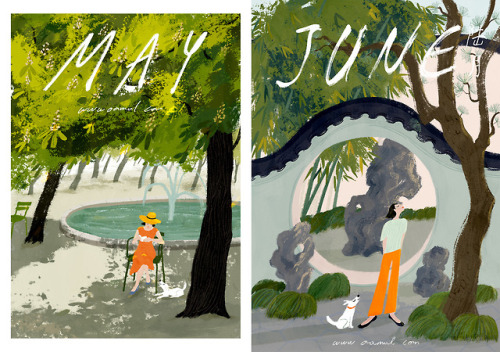How To Write Dialogue
How to Write Dialogue
Basic Structure
There are a few ways to structure dialogue. These are the most common ways to structure a line, although I haven’t seen 7 in a very long time.
“The dog’s outside. He’s finally stopped barking,” Anne said.
“The dog’s outside. He’s finally stopped barking,” said Anne.
“The dog’s outside,” Anne said. “He’s finally stopped barking.”
“The dog’s outside,” said Anne. “He’s finally stopped barking.”
Anne said, “The dog’s outside. He’s finally stopped barking.”
“The dog’s outside.” Anne sighed with relief. “He’s finally stopped barking.”
Said Anne, “The dog’s outside. He’s finally stopped barking.”
It’s a good idea to avoid using the same method twice. Two or three or four (!) straight lines of 1’s “X said” or 6’s sentences broken up by a dialogue will sound strange.
Notice how the dialogue tag (“Anna said” and variations thereof) only goes in an area that does not impede the flow of dialogue. In the case of 3, 4, and 6, the dialogue tag or action actually enhances the period’s long pause. Only place dialogue tags at the beginning or end of a phrase, or where there would normally be a period, semicolon, colon, comma, or other punctuation indicating rest.
Dialogue Tags
A dialogue tag is a word + the person saying it. “He said”, “she said”, “they said”, etc. are all dialogue tags. The most common verb in a dialogue tag is “to say” (said, says, say, etc.) A lot of authors like it for its simplicity and unobtrusiveness. For those who insist “said is dead” (implying “said” is so bland it shouldn’t be used anymore), there are a bajillion other dialogue tags to play with.
Some verbs should not be used as dialogue tags.
“I’m really grateful,” Kiandra smiled
“This is ridiculous,” Aelwen sighed.
A dialogue tag is there to tell the reader how the character says something. You cannot say something smilingly or sighingly. You might say it happily or regretfully.
“I’m really grateful,” Kiandra said with a smile // “I’m really grateful,” Kiandra said happily
“This is ridiculous,” Aelwen said. He sighed sadly // “This is ridiculous.” Aelwen sighed.
Actions are not dialogue tags.
Adverbs
Adverbs are the little “-ly” words you add at the end of dialogue tag to show how a character is saying something.
“I don’t know,” Vanhi said uncertainly.
“I can’t wait!” Quetzel said excitedly.
Excitedly and uncertainly are the adverbs in this case. There is a list of adverbs here and here. Don’t get too hooked on adverbs. They’re great for helping when the meaning of a line is unclear.
Take this sentence:
“I love you,” Mirage said.
By itself this sentence isn’t much. You have no idea how Mirage is saying it, and it could be hundreds of different ways. Now modify that.
“I love you,” Mirage said desperately.
“I love you,” Mirage said sarcastically.
“I love you,” Mirage said joyfully.
“I love you,” Mirage said defiantly.
Now you know exactly how Mirage is saying it.
Recently, there’s been a movement to do away with adverbs or to use adverbs sparingly. Most adverbs are unnecessary. You can guess how a character is saying something by context. For example,
Myrtle kissed Mirage’s cheek and pressed a chocolate into her hand.
“I love you,” Mirage said.
You can assume that Mirage is saying this in loving or affectionate voice without the adverb being there. You can also use different dialogue tags to express the same emotion.
“I love you,” Mirage yelled
Vs.
“I love you,” Mirage said loudly.
Finally, adverbs sound funny if you use them one after another.
“I despise you,” Makai said sharply.
“I don’t think you’re much to look at, either,” Hagan said fiercely.
“I can’t believe Falk put us on this stupid date,” Makai said crossly.
If you’re addicted to adverbs, restrict them to every ten dialogue tags. If you aren’t addicted to adverbs, then just use them whenever you feel you need them. You can always delete them later if you think they’re unnecessary.
Abandoning Your Dialogue Tags
There are some cases where you can forgo using dialogue tags altogether. When two people are speaking with each other in a natural give-and-take pattern, the audience knows that they are the ones speaking, and in what order they are speaking. See below.
“The dog’s outside,” Anne said. “He’s finally stopped barking.”
“I don’t understand why he’s so frightened of the vacuum,” said Brenda.
“If you were the size of a Chihuahua, I think a lot of things would frighten you,” Anne said.
“Was that a crack about my height?”
“Shorty!”
You can tell Brenda said, “Was that a crack about my height?” because Anne spoke before her, and you can tell Anne said, “Shorty!” because Brenda spoke before her. Do not use this trick if more than two people are speaking at a time. You could introduce a third person like this:
“Was that a crack about my height?”
“Shorty!”
“Cut it out,” Dan said crossly.
“Can’t we have a little fun?” Anne asked.
“You’re so annoying.”
Since we specified it’s Anne and Dan speaking in turn, it can only be Dan who says, “You’re so annoying.”
Keep reading
More Posts from Bluenuitfm and Others

من أصدق الحاجات اللّى شوفتها، رسالة كتبتها سعاد حسني بخطّ اليد، يناير 1993
..
(أنتَ عارف عاوزني ابقى ازاي)
احتاجَك بشدّة واترجاك يا رب أنّ ترسل الملائكة في الصباح 5-1-1993 وتظلّ الملائكة معي إلى ما لا نهاية، كي أفتخر بنفسي وأكون كمّا شئت، وما رسمته لي يتضح أمامي، حتى أسير عليه، أريد أنّ أرى بوضوح وأنّ يكون هناك يقين ومعرفة كاملة لما سوف أسير عليه.



LEDEBUT vol. 31 Samuel with own life



This child in gaza is screaming:
"I wish it was a dream. Oh, mom and dad. I wish it was a dream and my mom and dad are still alive" after being rescued from underneath the rubble to find his parents killed by Israel.
Share this, we are not numbers. Let our voices be heard in hopes that this stops.
-
 heckcareoxytwit liked this · 5 days ago
heckcareoxytwit liked this · 5 days ago -
 heckcareoxytwit reblogged this · 5 days ago
heckcareoxytwit reblogged this · 5 days ago -
 xx-leech liked this · 1 week ago
xx-leech liked this · 1 week ago -
 bonmoo-blog1 liked this · 2 months ago
bonmoo-blog1 liked this · 2 months ago -
 saltgh0ul liked this · 2 months ago
saltgh0ul liked this · 2 months ago -
 heckcareoxytwit reblogged this · 2 months ago
heckcareoxytwit reblogged this · 2 months ago -
 kasmie liked this · 3 months ago
kasmie liked this · 3 months ago -
 lexskxtches reblogged this · 4 months ago
lexskxtches reblogged this · 4 months ago -
 apuppyindisguise liked this · 5 months ago
apuppyindisguise liked this · 5 months ago -
 thatcassieblake liked this · 9 months ago
thatcassieblake liked this · 9 months ago -
 feliciahardying liked this · 10 months ago
feliciahardying liked this · 10 months ago -
 sociopathichero liked this · 10 months ago
sociopathichero liked this · 10 months ago -
 heckcareoxytwit reblogged this · 11 months ago
heckcareoxytwit reblogged this · 11 months ago -
 gummy-pop1 liked this · 1 year ago
gummy-pop1 liked this · 1 year ago -
 chipstertool reblogged this · 1 year ago
chipstertool reblogged this · 1 year ago -
 heckcareoxytwit reblogged this · 1 year ago
heckcareoxytwit reblogged this · 1 year ago -
 persephvnes-elysivm liked this · 1 year ago
persephvnes-elysivm liked this · 1 year ago -
 soaringornithopter liked this · 1 year ago
soaringornithopter liked this · 1 year ago -
 soaringornithopter reblogged this · 1 year ago
soaringornithopter reblogged this · 1 year ago -
 steddiefvcker liked this · 1 year ago
steddiefvcker liked this · 1 year ago -
 baileyblues reblogged this · 1 year ago
baileyblues reblogged this · 1 year ago -
 notsomegirlyoucansway reblogged this · 1 year ago
notsomegirlyoucansway reblogged this · 1 year ago -
 everninecity liked this · 1 year ago
everninecity liked this · 1 year ago -
 blackrevell liked this · 1 year ago
blackrevell liked this · 1 year ago -
 baileyblues reblogged this · 1 year ago
baileyblues reblogged this · 1 year ago -
 skumppakeisarinna liked this · 1 year ago
skumppakeisarinna liked this · 1 year ago -
 pearlesscentt liked this · 1 year ago
pearlesscentt liked this · 1 year ago -
 niksixx liked this · 1 year ago
niksixx liked this · 1 year ago -
 heckcareoxytwit reblogged this · 1 year ago
heckcareoxytwit reblogged this · 1 year ago -
 yumester liked this · 1 year ago
yumester liked this · 1 year ago -
 soymilkwithyuri liked this · 1 year ago
soymilkwithyuri liked this · 1 year ago -
 drained-energy2 reblogged this · 2 years ago
drained-energy2 reblogged this · 2 years ago -
 bluesummersq liked this · 2 years ago
bluesummersq liked this · 2 years ago -
 ravenfenty liked this · 2 years ago
ravenfenty liked this · 2 years ago -
 knowncorrine liked this · 2 years ago
knowncorrine liked this · 2 years ago -
 francforever liked this · 2 years ago
francforever liked this · 2 years ago -
 sevenndiaries liked this · 2 years ago
sevenndiaries liked this · 2 years ago -
 astrodevils liked this · 2 years ago
astrodevils liked this · 2 years ago -
 herogers liked this · 2 years ago
herogers liked this · 2 years ago -
 megamilfluvr liked this · 2 years ago
megamilfluvr liked this · 2 years ago -
 my-pizzahut-blog reblogged this · 2 years ago
my-pizzahut-blog reblogged this · 2 years ago -
 mofasaa liked this · 2 years ago
mofasaa liked this · 2 years ago -
 craftyphantombanana liked this · 2 years ago
craftyphantombanana liked this · 2 years ago -
 green-tea-sp00n liked this · 2 years ago
green-tea-sp00n liked this · 2 years ago -
 art-emissss liked this · 2 years ago
art-emissss liked this · 2 years ago


























